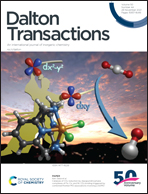An innovative approach towards the simultaneous enhancement of the oxygen reduction and evolution reactions using a redox mediator in polymer based Li–O2 batteries
Abstract
For safety concerns, polymer-based Li–O2 batteries have received more attention than traditional non-aqueous Li–O2 batteries. However, poor cycling stability, low round trip efficiency, and over charge potential during cycling are the major shortcomings for their future applications. In this work, a soluble redox mediator integrated into a polymer electrolyte provides immediate access to the solid discharged product, lowering the energy barrier for reversible Li2O2 generation and disintegration. Moreover, introducing a redox mediator to the polymer electrolyte boosts the ORR during discharge and the OER during the recharge process. The synergistic redox mediator pBQ (1,4 benzoquinone) dramatically reduces the over-potential. A small proportion of pBQ in the polymer electrolyte allows Li2O2 to develop in a thin film-like morphology on the cathode surface, resulting in a high reversible capacity of ∼12 000 mA h g−1 and an extended cycling stability of 100 cycles at 200 mA g−1 with a cut-off capacity of 1000 mA h g−1. The remarkable cell performance is attributed to the fast kinetics of para benzoquinone for the ORR and OER in Li–O2 batteries. The use of a redox mediator in a polymer electrolyte opens a new avenue for practical Li–O2 battery applications in achieving low charge potential and excellent energy efficiency.



 Please wait while we load your content...
Please wait while we load your content...